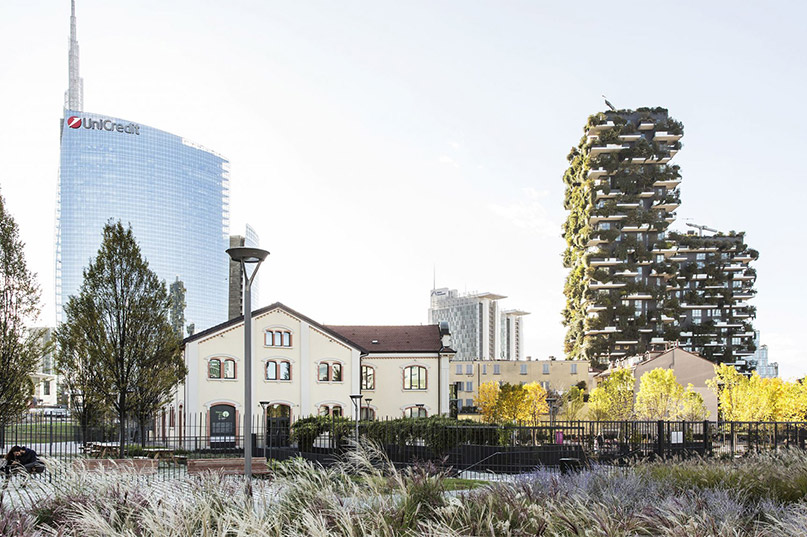For World Architecture Day we wanted to share one of our favourite projects and what we believe is an example of how architecture can, and should, play a part in enhancing cities not only aesthetically but also sustainably.
Bosco Verticale by Stefano Boeri Architetti in Milan is a creative example of solving the issue of adding housing in a densely populated area while also contributing positively to the environment. As Boeri puts it, the project “contributes to the regeneration of the environment and urban biodiversity without the implication of expanding the city’s territory”.
The project in the Porta Nuova district of Milan (which I was fortunate to see in person quite often), consists of two residential towers covered with over 20,000 plants, including trees of varying sizes, shrubs, and other floral plants, equaling over 200,000 square feet of forest on flat land, according to Boeri.
The brilliance of the installation of plants not only adds beauty to the area with the illusion of a vertical forest, but contributes to ongoing efforts to make our cities more eco-friendly. The 20,000 plants help to reduce smog, absorb CO2 and dust, produce oxygen and improve air quality, converting approximately 44,000 pounds of carbon per year. The plants also act as a thermal barrier for more efficient climate control inside the buildings. In addition, the towers themselves are self-sufficient. They incorporate renewable energy from solar panels and a filtration system that recycles excess water from everyday building and occupant use, reducing the overall waste and carbon footprint.
This award-wining example of “Metropolitan Reforestation” or “vertical densification of nature” should be taken as a reference point not only for creative design and problem solving, but as a model for sustainable building practices in the future.
Read more about the project here.
Author: Giancarlo Colasanti

